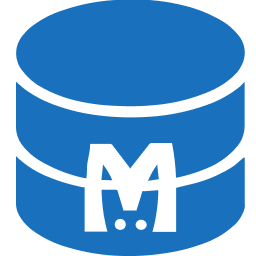You are looking at the documentation of a prior release. To read the documentation of the latest release, please
visit here.
New to KubeDB? Please start here.
Storage Autoscaling of a MongoDB Standalone Database
This guide will show you how to use KubeDB to autoscale the storage of a MongoDB standalone database.
Before You Begin
At first, you need to have a Kubernetes cluster, and the
kubectlcommand-line tool must be configured to communicate with your cluster.Install
KubeDBProvisioner, Ops-manager and Autoscaler operator in your cluster following the steps here.Install
Metrics Serverfrom hereInstall Prometheus from here
You must have a
StorageClassthat supports volume expansion.You should be familiar with the following
KubeDBconcepts:
To keep everything isolated, we are going to use a separate namespace called demo throughout this tutorial.
$ kubectl create ns demo
namespace/demo created
Note: YAML files used in this tutorial are stored in docs/examples/mongodb directory of kubedb/docs repository.
Storage Autoscaling of Standalone Database
At first verify that your cluster has a storage class, that supports volume expansion. Let’s check,
$ kubectl get storageclass
NAME PROVISIONER RECLAIMPOLICY VOLUMEBINDINGMODE ALLOWVOLUMEEXPANSION AGE
standard (default) rancher.io/local-path Delete WaitForFirstConsumer false 9h
topolvm-provisioner topolvm.cybozu.com Delete WaitForFirstConsumer true 9h
We can see from the output the topolvm-provisioner storage class has ALLOWVOLUMEEXPANSION field as true. So, this storage class supports volume expansion. We can use it. You can install topolvm from here
Now, we are going to deploy a MongoDB standalone using a supported version by KubeDB operator. Then we are going to apply MongoDBAutoscaler to set up autoscaling.
Deploy MongoDB standalone
In this section, we are going to deploy a MongoDB standalone database with version 4.4.26. Then, in the next section we will set up autoscaling for this database using MongoDBAutoscaler CRD. Below is the YAML of the MongoDB CR that we are going to create,
apiVersion: kubedb.com/v1
kind: MongoDB
metadata:
name: mg-standalone
namespace: demo
spec:
version: "4.4.26"
storageType: Durable
storage:
storageClassName: topolvm-provisioner
resources:
requests:
storage: 1Gi
deletionPolicy: WipeOut
Let’s create the MongoDB CRO we have shown above,
$ kubectl create -f https://github.com/kubedb/docs/raw/v2024.11.8-rc.0/docs/examples/mongodb/autoscaling/storage/mg-standalone.yaml
mongodb.kubedb.com/mg-standalone created
Now, wait until mg-standalone has status Ready. i.e,
$ kubectl get mg -n demo
NAME VERSION STATUS AGE
mg-standalone 4.4.26 Ready 2m53s
Let’s check volume size from petset, and from the persistent volume,
$ kubectl get sts -n demo mg-standalone -o json | jq '.spec.volumeClaimTemplates[].spec.resources.requests.storage'
"1Gi"
$ kubectl get pv -n demo
NAME CAPACITY ACCESS MODES RECLAIM POLICY STATUS CLAIM STORAGECLASS REASON AGE
pvc-cf469ed8-a89a-49ca-bf7c-8c76b7889428 1Gi RWO Delete Bound demo/datadir-mg-standalone-0 topolvm-provisioner 7m41s
You can see the petset has 1GB storage, and the capacity of the persistent volume is also 1GB.
We are now ready to apply the MongoDBAutoscaler CRO to set up storage autoscaling for this database.
Storage Autoscaling
Here, we are going to set up storage autoscaling using a MongoDBAutoscaler Object.
Create MongoDBAutoscaler Object
In order to set up vertical autoscaling for this standalone database, we have to create a MongoDBAutoscaler CRO with our desired configuration. Below is the YAML of the MongoDBAutoscaler object that we are going to create,
apiVersion: autoscaling.kubedb.com/v1alpha1
kind: MongoDBAutoscaler
metadata:
name: mg-as
namespace: demo
spec:
databaseRef:
name: mg-standalone
storage:
standalone:
expansionMode: "Online"
trigger: "On"
usageThreshold: 60
scalingThreshold: 50
Here,
spec.databaseRef.namespecifies that we are performing vertical scaling operation onmg-standalonedatabase.spec.storage.standalone.triggerspecifies that storage autoscaling is enabled for this database.spec.storage.standalone.usageThresholdspecifies storage usage threshold, if storage usage exceeds60%then storage autoscaling will be triggered.spec.storage.standalone.scalingThresholdspecifies the scaling threshold. Storage will be scaled to50%of the current amount.- It has another field
spec.storage.replicaSet.expansionModeto set the opsRequest volumeExpansionMode, which support two values:Online&Offline. Default value isOnline.
Let’s create the MongoDBAutoscaler CR we have shown above,
$ kubectl apply -f https://github.com/kubedb/docs/raw/v2024.11.8-rc.0/docs/examples/mongodb/autoscaling/storage/mg-as-standalone.yaml
mongodbautoscaler.autoscaling.kubedb.com/mg-as created
Storage Autoscaling is set up successfully
Let’s check that the mongodbautoscaler resource is created successfully,
$ kubectl get mongodbautoscaler -n demo
NAME AGE
mg-as 102s
$ kubectl describe mongodbautoscaler mg-as -n demo
Name: mg-as
Namespace: demo
Labels: <none>
Annotations: <none>
API Version: autoscaling.kubedb.com/v1alpha1
Kind: MongoDBAutoscaler
Metadata:
Creation Timestamp: 2021-03-08T12:58:01Z
Generation: 1
Managed Fields:
API Version: autoscaling.kubedb.com/v1alpha1
Fields Type: FieldsV1
fieldsV1:
f:metadata:
f:annotations:
.:
f:kubectl.kubernetes.io/last-applied-configuration:
f:spec:
.:
f:databaseRef:
.:
f:name:
f:storage:
.:
f:standalone:
.:
f:scalingThreshold:
f:trigger:
f:usageThreshold:
Manager: kubectl-client-side-apply
Operation: Update
Time: 2021-03-08T12:58:01Z
Resource Version: 134423
Self Link: /apis/autoscaling.kubedb.com/v1alpha1/namespaces/demo/mongodbautoscalers/mg-as
UID: 999a2dc9-7eb7-4ed2-9e90-d3f8b21c091a
Spec:
Database Ref:
Name: mg-standalone
Storage:
Standalone:
Scaling Threshold: 50
Trigger: On
Usage Threshold: 60
Events: <none>
So, the mongodbautoscaler resource is created successfully.
Now, for this demo, we are going to manually fill up the persistent volume to exceed the usageThreshold using dd command to see if storage autoscaling is working or not.
Let’s exec into the database pod and fill the database volume using the following commands:
$ kubectl exec -it -n demo mg-standalone-0 -- bash
root@mg-standalone-0:/# df -h /data/db
Filesystem Size Used Avail Use% Mounted on
/dev/topolvm/1df4ee9e-b900-4c0f-9d2c-8493fb30bdc0 1014M 334M 681M 33% /data/db
root@mg-standalone-0:/# dd if=/dev/zero of=/data/db/file.img bs=500M count=1
1+0 records in
1+0 records out
524288000 bytes (524 MB, 500 MiB) copied, 0.359202 s, 1.5 GB/s
root@mg-standalone-0:/# df -h /data/db
Filesystem Size Used Avail Use% Mounted on
/dev/topolvm/1df4ee9e-b900-4c0f-9d2c-8493fb30bdc0 1014M 835M 180M 83% /data/db
So, from the above output we can see that the storage usage is 84%, which exceeded the usageThreshold 60%.
Let’s watch the mongodbopsrequest in the demo namespace to see if any mongodbopsrequest object is created. After some time you’ll see that a mongodbopsrequest of type VolumeExpansion will be created based on the scalingThreshold.
$ watch kubectl get mongodbopsrequest -n demo
Every 2.0s: kubectl get mongodbopsrequest -n demo
NAME TYPE STATUS AGE
mops-mg-standalone-p27c11 VolumeExpansion Progressing 26s
Let’s wait for the ops request to become successful.
$ watch kubectl get mongodbopsrequest -n demo
Every 2.0s: kubectl get mongodbopsrequest -n demo
NAME TYPE STATUS AGE
mops-mg-standalone-p27c11 VolumeExpansion Successful 73s
We can see from the above output that the MongoDBOpsRequest has succeeded. If we describe the MongoDBOpsRequest we will get an overview of the steps that were followed to expand the volume of the database.
$ kubectl describe mongodbopsrequest -n demo mops-mg-standalone-p27c11
Name: mops-mg-standalone-p27c11
Namespace: demo
Labels: app.kubernetes.io/component=database
app.kubernetes.io/instance=mg-standalone
app.kubernetes.io/managed-by=kubedb.com
app.kubernetes.io/name=mongodbs.kubedb.com
Annotations: <none>
API Version: ops.kubedb.com/v1alpha1
Kind: MongoDBOpsRequest
Metadata:
Creation Timestamp: 2021-03-08T13:19:51Z
Generation: 1
Managed Fields:
API Version: ops.kubedb.com/v1alpha1
Fields Type: FieldsV1
fieldsV1:
f:metadata:
f:labels:
.:
f:app.kubernetes.io/component:
f:app.kubernetes.io/instance:
f:app.kubernetes.io/managed-by:
f:app.kubernetes.io/name:
f:ownerReferences:
f:spec:
.:
f:databaseRef:
.:
f:name:
f:type:
f:volumeExpansion:
.:
f:standalone:
Manager: kubedb-autoscaler
Operation: Update
Time: 2021-03-08T13:19:51Z
API Version: ops.kubedb.com/v1alpha1
Fields Type: FieldsV1
fieldsV1:
f:status:
.:
f:conditions:
f:observedGeneration:
f:phase:
Manager: kubedb-enterprise
Operation: Update
Time: 2021-03-08T13:19:52Z
Owner References:
API Version: autoscaling.kubedb.com/v1alpha1
Block Owner Deletion: true
Controller: true
Kind: MongoDBAutoscaler
Name: mg-as
UID: 999a2dc9-7eb7-4ed2-9e90-d3f8b21c091a
Resource Version: 139871
Self Link: /apis/ops.kubedb.com/v1alpha1/namespaces/demo/mongodbopsrequests/mops-mg-standalone-p27c11
UID: 9606485d-9dd8-4787-9c7c-61fc874c555e
Spec:
Database Ref:
Name: mg-standalone
Type: VolumeExpansion
Volume Expansion:
Standalone: 1594884096
Status:
Conditions:
Last Transition Time: 2021-03-08T13:19:52Z
Message: MongoDB ops request is expanding volume of database
Observed Generation: 1
Reason: VolumeExpansion
Status: True
Type: VolumeExpansion
Last Transition Time: 2021-03-08T13:20:47Z
Message: Successfully Expanded Volume
Observed Generation: 1
Reason: StandaloneVolumeExpansion
Status: True
Type: StandaloneVolumeExpansion
Last Transition Time: 2021-03-08T13:20:52Z
Message: Successfully Expanded Volume
Observed Generation: 1
Reason:
Status: True
Type:
Last Transition Time: 2021-03-08T13:20:57Z
Message: PetSet is recreated
Observed Generation: 1
Reason: ReadyPetSets
Status: True
Type: ReadyPetSets
Last Transition Time: 2021-03-08T13:20:57Z
Message: Successfully Expanded Volume
Observed Generation: 1
Reason: Successful
Status: True
Type: Successful
Observed Generation: 1
Phase: Successful
Events:
Type Reason Age From Message
---- ------ ---- ---- -------
Normal PauseDatabase 110s KubeDB Ops-manager operator Pausing MongoDB demo/mg-standalone
Normal PauseDatabase 110s KubeDB Ops-manager operator Successfully paused MongoDB demo/mg-standalone
Normal StandaloneVolumeExpansion 55s KubeDB Ops-manager operator Successfully Expanded Volume
Normal 50s KubeDB Ops-manager operator Successfully Expanded Volume
Normal ResumeDatabase 50s KubeDB Ops-manager operator Resuming MongoDB demo/mg-standalone
Normal ResumeDatabase 50s KubeDB Ops-manager operator Successfully resumed MongoDB demo/mg-standalone
Normal ReadyPetSets 45s KubeDB Ops-manager operator PetSet is recreated
Normal Successful 45s KubeDB Ops-manager operator Successfully Expanded Volume
Now, we are going to verify from the Petset, and the Persistent Volume whether the volume of the standalone database has expanded to meet the desired state, Let’s check,
$ kubectl get sts -n demo mg-standalone -o json | jq '.spec.volumeClaimTemplates[].spec.resources.requests.storage'
"1594884096"
$ kubectl get pv -n demo
NAME CAPACITY ACCESS MODES RECLAIM POLICY STATUS CLAIM STORAGECLASS REASON AGE
pvc-cf469ed8-a89a-49ca-bf7c-8c76b7889428 2Gi RWO Delete Bound demo/datadir-mg-standalone-0 topolvm-provisioner 26m
The above output verifies that we have successfully autoscaled the volume of the MongoDB standalone database.
Cleaning Up
To clean up the Kubernetes resources created by this tutorial, run:
kubectl delete mg -n demo mg-standalone
kubectl delete mongodbautoscaler -n demo mg-as



































